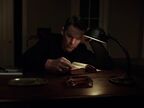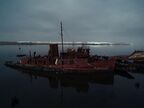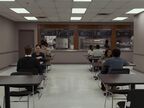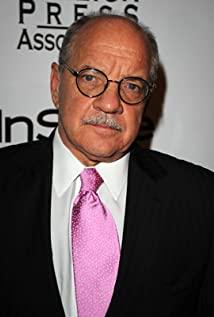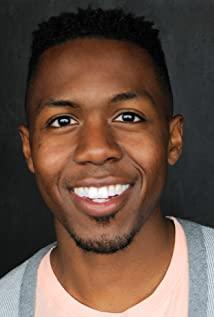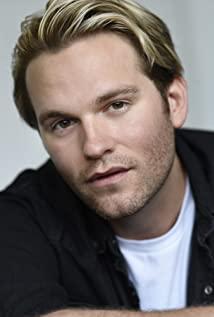Before talking about "The First Reformed Church", I can't get around "Diary of a Country Pastor".
"The First Reformed Church" is a film that pays tribute to "The Diary of a Country Priest", and it is the spiritual and historical inheritance of "The Country Priest". Paul Schrader continued Bresson's narrative rhythm and transcendence style, and transcended time and space with "The Country Priest" to perform a mystical concerto between untimely faith and secret and proclaimed grace.
"Diary of a Country Priest" is a film created entirely in accordance with the aesthetics of "icons". When Paul Schrader, the director of "The First Reformed Church," studied "Diary of a Country Priest", he believed that the film's transcendental style borrowed from the composition style of the Eastern iconographic art. The purpose of this kind of artistic expression is not to highlight the environment, but to "spiritualize" the appearance of people, so that they have a static and eternal texture.
"Diary of a Country Priest" first constructed the image of a young and weak priest in form. Just like the composition method of icon painting mentioned above, the pictures of the same scene and the same camera outline a series of flat figures. Most of their faces are staring blankly, and they are often in a state of contemplation and trance. In the era when film technology pursued a sense of depth and created a third dimension, Bresson did the opposite, allowing the audience to penetrate deeper into the hidden world of the characters' hearts through simple and flat screens.
The composition lines are not the traditional stable structure, they are mostly inclined to reflect the inner struggle of the characters. The director will often take pictures of doors and windows to symbolize the imprisonment of the characters. In his book "Christianity and Western Movies", Hou Jun divides "imprisonment" into three levels, one is the imprisonment of the flesh, the priest's body is gradually weakened due to severe stomach problems. The second is the imprisonment of social relations, especially the breakdown of family relations with the earl’s family as an example to show the depraved countryside, and to reflect the spiritual crisis after World War II. The third level of imprisonment expresses that in an environment that is not accepted by the people of the jurisdiction, the priests and their weaknesses are fighting against each other.
The structure of the whole story is consistent with the structure of the medieval "Passion Drama", that is, the "Road to the Cross"; each paragraph is a stop on this road, and the end of the film also has a scene analogous to the Passion of the Jesus. As the story progresses, the young priest seems to walk to Golgotha, getting closer and closer to death. What's amazing is that as he becomes weaker and weaker, the audience can feel the interaction of the opposing forces, achieving the effect of seemingly anti-dramatic but with dramatic tension.
The first climax of the play, the dialogue between the priest and the bereaved countess, formed the power that can be seen between the weak priest and the inspiring conversation. The countess originally showed the same sarcasm to the young priest as ordinary people, but because the priest opened his heart, let the victims enter their secret residence, and face the brightness and darkness, doubt and belief of the inner world together, the conversation started. In order to meet people deeply. This dialogue model is in sharp contrast to the conversation between the heroine and the deacon in "Miyang":
"Are you afraid of death yourself?"
"Yes, ma'am. But I must honestly say that suicide is difficult, especially for reputation. I am more afraid of your death than my own death."
After the priest finished speaking, the countess silently walked to the window, and she closed the window gently. This action had a special meaning and a turning point, which meant that she began to accept the young priest. Then she walked slowly to the mirror. We know that mirrors in movies usually have symbolic meaning, that is, the other side of the character begins to surface. The countess sits quietly next to the mirror. The structure of this picture is indistinctly compatible with the composition of the painting of the Virgin Mary, as if weeping and telling them the grief of losing their son.
"He took my son away, what else can he do to me? I'm no longer afraid of him. Maybe I shouldn't tell you, I'm saying to myself, if there is a place in the world that God cannot control, If you get there and have to suffer eternal death forever, every second, I will take my son there and say to God, do whatever you can to punish us. Is this terrible?"
"Because I do the same, and sometimes think so. If philosophers and pagans also have God, even though he will take refuge in the highest heaven, our suffering will also call him back to the world, as you know. , Our God is not hiding."
The dialogue formed mutual wrestling and pulling in the back and forth. The young priest criticized the countess's rebellion. She sometimes fought back and sometimes questioned. The priest gradually knocked on the opponent's originally closed heart, removed her layers of illusory mask, and slowly guided her to face the others. Their conversations are sometimes full of gunpowder, sometimes surging with unspeakable pain, and the dynamic power of the conversation increasingly shows the silent existence of God between the two. Bazin, a master of film theory, commented on this conversation:
In the entire French film scene (and even in the literary world), there are probably not many moments when the scene of the Countess's neck is even stronger than that of the priest (the young priest). However, this kind of beauty does not depend on the performance of the actors at all, nor on the dramatic and psychological factors of the dialogue, or even on the inherent meaning of the dialogue. The true dialogue that embodies this confrontation between a savvy pastor and a desperate soul is inherently difficult to express...Language knowledge foreshadows or brews a strong feeling of accepting the holy favor. Therefore, no flashy rhetoric is used here to express conversion to religion. Even though this speech became more intense, and then finally calmed down, the extremely severe dialogue made us feel that we had witnessed a supernatural storm with our own eyes. These dialogues are still only'cold ground', they are silent repercussions, and reveal the secrets of our hearts. And silence is the real dialogue between these two souls: pardon me for rash comparison, dialogue is like the opposite of God's face. "
The conversation finally ended when the countess realized her perpetual decline. She knelt on the ground and the young priest stood. We can therefore see the transformation of their relationship. From the very beginning, the countess stood and sat with the young godfather to highlight the weak position of the godfather, and as the conversation deepened, we became more and more aware that the young godfather did not put himself in In a high position, his compassion for the countess's soul, on the contrary, made him, a weak person, more powerful.
In the end, his comfort did not save a soul. However, he gestured the cross to the countess who was kneeling on the ground, and said: "May peace be with you." The day before the countess died, he wrote a letter to the priest, which said: "I don't believe that obedience can solve everything. In fact, I have never been compliant. However, in the words you express, I feel the peace you bring to me."
This dialogue makes us think that comfort sometimes does not bring about the ultimate desired purpose, or induces repentance or makes them abandon the sin; sometimes comfort cannot satisfy the comforter’s inner messianic complex and restore a deeply mired soul . If the ability to comfort can only be limited to bringing a person a moment of peace and tranquility, I would like to say to that person: "May peace be with you." And silently cross him in my heart. Therefore, comfort is not a dominant existence, just as at the end of the film, the priest who died in poverty and disease wrote the last sentence in the diary: "What is the relationship? Everything is grace."
The two films formed a counterpoint in plot and temperament, and on this basis, "First Reformed Society" added new content in a contextualized manner. The film first portrays the image of a priest who is also weak, alcoholic, and withdrawn. Compared with the young priest in "The Country", the priest played by Ethan Hawke has a few more traumas. The priest suffered from the pain of bereavement. Alienation and isolation from the outside world.
Secondly, the suicide of the congregation deepened the breath of despair. For Michael, a deeply pessimistic environmentalist, the pastor tried to comfort him, tried to persuade the other party with his own suffering, to the effect: "You see that I am worse than you, and I do not understand your pain. My son is dead, I have survived, and so can you."
This kind of consolation based on misfortune did not change Michael's decision. He no longer had hope for the future of the earth, and he also lost confidence in human beings who did not take any action. He finally chose to shoot suicide. The act of "martyrdom" for the sake of environmental protection stimulated the pastor, and laid the groundwork for the pastor's future decision by using action-oriented methods to prove its existence.
The pastor himself was a comforter of failure, and was comforted by others in a terrible way. The lead singer of the choir pursued him, her motivation for comfort came from the fact that the pastor was sick and could not take care of herself. Therefore, she tried to monitor and understand the pastor's condition, but she angered the pastor because of her self-confessed attitude and the way she did not give the other party any space.
"I can't bear your care, you linger by my side, and your ardent expectations, you always remind me of my flaws and failures, you want things that never existed and never existed."
"You didn't take good care of yourself." The female lead singer cried.
"I despise you, I despise what you say to me, you only care about trivial things, you are a stumbling block!"
The last straw that crushed the pastor was that he gradually discovered that Fengshengtang, a church influenced by the theology of success, was the biggest contributor behind it was the leader of the factory that made huge profits and wilfully destroys the ecology. This shows that religion humbly yields to power and capital. The First Reformed Church where the pastor belongs is deeply immersed in Jansenism, just like his declining body, unable to respond to a series of social problems, and can only sit alone in an embarrassing closed system.
In terms of expressing "imprisonment", the film step by step reveals the mental breakdown of the pastor, the conflict of positions between the churches, and the destruction of the ecological environment. Several realistic nets have built a bottom-up search for a way out. A breakthrough, cursed alienated world. The priest is gradually submerged in the deep sea of despair, and step by step towards self-destruction has become an irreversible fate.
However, as the pastor once said when comforting Michael, a life without despair is a life without hope, and the existence of both at the same time is the truth of life. The movie does not go dark, but shows us a most advanced form of comfort in the interlacing of light and darkness. It is more than the secular companionship in "Miyang" and the unspeakable contemplation in "The Diary of a Country Priest" To be profound, it expresses that only a top-down approach can break the imprisonment, that is, the opposite of God’s silence-He is not only beyond all things, but also within creation. He acts personally. Fellowship with people.
The film uses the pregnant Mary to complete this metaphor of salvation. She always takes the initiative to find the pastor, and the pastor will only temporarily get rid of depression and pessimism when she is with her, and smile from the heart. The "magic and mysterious journey" they carried out in the room expressed a kind of close fellowship by sticking to each other face to face, trying to maximize physical contact. And the first stop of the mysterious journey, as we have seen-the original beauty of nature.
Just like the relationship between Adam and Eve in the book of Genesis, the relationship between Adam and Eve in the bone and the flesh in the flesh, all the similarities with God reflect the coherent, original, mutual inhabitation and mutual penetration of the Trinity; God is in In the world, the world is in God. [6] The picture metaphors the initial creation of God, a divine mutual coherence relationship.
The term perichoresis is mentioned in the book "God in Creation", which is used to describe the relationship of the Trinity, that is, the cycle characteristics of eternal divine life. Through their eternal love, they live in each other, reside in each other, so that they become one.
The priest who has been in a state of alienation for a long time still wants to destroy himself to fulfill a certain will to survive. He tied a bomb under the shepherd's robe. As he saw Mary appearing in the church, he couldn't bear to unload the bomb and put thorns on himself. It was bloody as if in order to achieve a certain will to suffer, and finally he cupped the cup. Nakayuki was dumped and replaced with engine oil.
In a distant shot, Mary stands outside the bright door, and the depth of field composition of the next scene reflects the contrast of light and dark between the two spaces, symbolizing that the priest's self-enclosed system will eventually be broken. At this time, Mary called out "Ernst". This was the only time in the whole show that a priest was no longer called a priest, but was called by a person's name.
Filling with engine oil is also a bitter cup to bear death. Ernst and Mary kissed in the singing of "Rely on the Lord's Forever Arm". As Moltman said, isolation and lack of contact mean death for all living things. To live (Lebendigsein) means to exist in relationships with others and other things. Life is to communicate in contact. So far, the movie has pushed Ernst into the light of the call.
At the end of this article, let us return to the beginning of the film, that is, Ernst stands on the podium and recites "Heidelberg Catechism Answers" with the congregation, which is exactly what this article will climb in the course of understanding and comforting layer by layer. The most apex:
What is the only comfort of life and death?
What is thy only comfort in life and death?
My body and soul
That I with body and soul
Between life and death
both in life and death
Not my own
am not my own
Belongs to my faithful savior Jesus Christ
but belong unto my faithful Savior Jesus Christ
He used precious blood
who with his precious blood
Completely wiped out all my sins
has fully satisfied for all my sins
And redeem me from all the power of the devil
and delivered me from all the power of the devil
He guards me
and so preserves me
View more about First Reformed reviews



